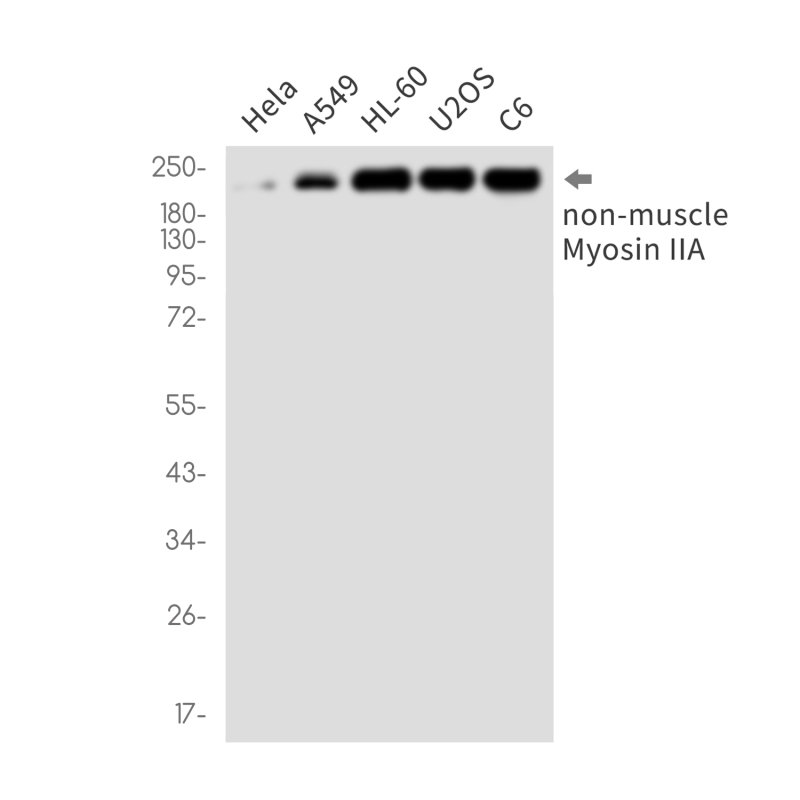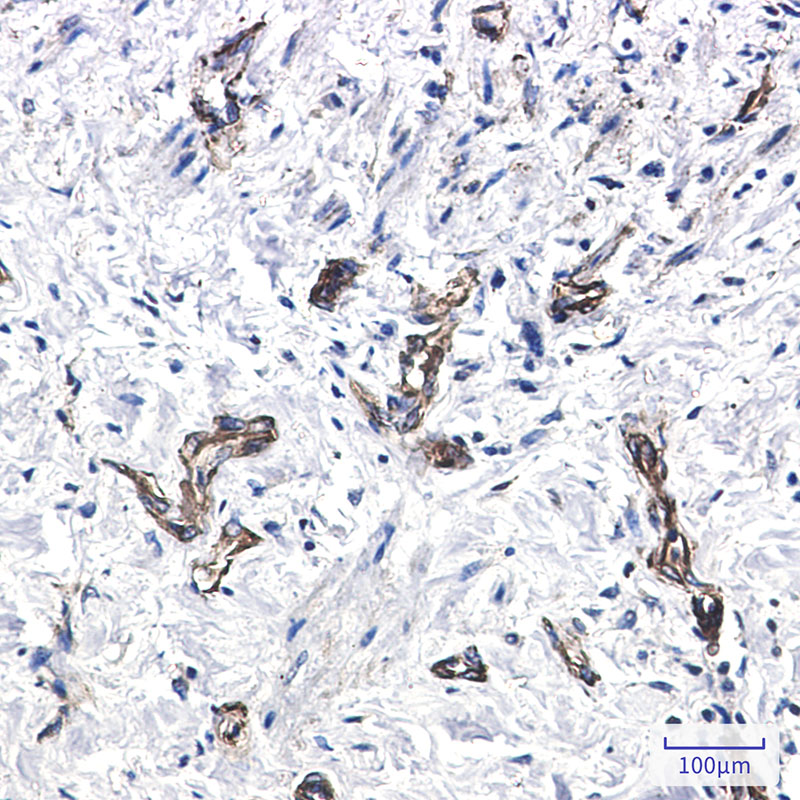

| WB | 1/500-1/1000 | Human,Mouse,Rat |
| IF | 1/20 | Human,Mouse,Rat |
| IHC | 1/50-1/100 | Human,Mouse,Rat |
| ICC | 技术咨询 | Human,Mouse,Rat |
| FCM | 咨询技术 | Human,Mouse,Rat |
| Elisa | 咨询技术 | Human,Mouse,Rat |
| Aliases | MHA; FTNS; EPSTS; BDPLT6; DFNA17; MATINS; NMMHCA; NMHC-II-A; NMMHC-IIA |
| Entrez GeneID | 4627 |
| WB Predicted band size | Calculated MW: 227 kDa; Observed MW: 227 kDa |
| Host/Isotype | Rabbit IgG |
| Antibody Type | Primary antibody |
| Storage | Store at 4°C short term. Aliquot and store at -20°C long term. Avoid freeze/thaw cycles. |
| Species Reactivity | Human,Rat |
| Immunogen | A synthetic peptide of human non-muscle Myosin IIA |
| Formulation | Purified antibody in TBS with 0.05% sodium azide,0.05%BSA and 50% glycerol. |
+ +
以下是关于MYH9抗体的假设性参考文献示例(仅供参考,建议通过学术数据库验证具体文献):
1. **文献名称**:*MYH9-related platelet disorders: Characterization of pathogenic mechanisms and diagnostic strategies*
**作者**:Pecci A, et al.
**摘要**:研究分析了MYH9基因突变导致的血小板减少症患者中MYH9蛋白的异常表达,通过特异性抗体进行免疫荧光染色,发现突变蛋白在粒细胞中的异常聚集是诊断标志。
2. **文献名称**:*Role of anti-MYH9 antibodies in the pathogenesis of chronic kidney disease*
**作者**:Albaqumi M, et al.
**摘要**:探讨了MYH9抗体在肾脏疾病中的潜在作用,发现部分肾小球病变患者血清中存在抗MYH9自身抗体,可能与足细胞损伤及蛋白尿相关。
3. **文献名称**:*Immunofluorescence detection of MYH9 mutations: A reliable tool for diagnosing MYH9-related disorders*
**作者**:Saito H, et al.
**摘要**:提出使用MYH9抗体进行外周血粒细胞免疫荧光检测,作为快速诊断MYH9相关疾病(如巨血小板综合征)的非侵入性方法。
4. **文献名称**:*Autoantibodies against MYH9 in autoimmune thrombocytopenia: Clinical implications*
**作者**:Noris P, et al.
**摘要**:报道了部分自身免疫性血小板减少症患者中存在抗MYH9抗体,提示该抗体可能与血小板破坏和疾病进展相关。
**注意**:以上为模拟内容,实际文献需通过PubMed、Google Scholar等平台检索关键词(如“MYH9 antibody”“MYH9-related disease”)获取。建议结合近五年研究以反映最新进展。
MYH9 antibodies are associated with disorders linked to mutations in the *MYH9* gene, which encodes non-muscle myosin heavy chain IIA (NMMHC-IIA). This protein is part of the myosin superfamily, critical for cellular motility, cytokinesis, and maintenance of cell shape. MYH9-related diseases, historically classified as May-Hegglin anomaly, Sebastian syndrome, Fechtner syndrome, and Epstein syndrome, are autosomal dominant disorders characterized by macrothrombocytopenia, leukocyte inclusions, and variable manifestations like sensorineural hearing loss, cataracts, or glomerulonephritis.
MYH9 antibodies are primarily used in diagnostics to detect abnormal NMMHC-IIA distribution in neutrophils via immunofluorescence, aiding in differentiating MYH9-related disorders from other thrombocytopenias. In research, these antibodies help study cytoskeletal dynamics, platelet dysfunction, and disease mechanisms. Most MYH9 antibodies target the N-terminal or tail regions of the protein, with monoclonal antibodies offering high specificity.
Interestingly, MYH9 autoantibodies are rare but have been reported in autoimmune conditions, suggesting broader implications. Their role in research extends to exploring associations with cancers, as MYH9 dysregulation is observed in some solid tumors. Overall, MYH9 antibodies serve as vital tools for both clinical diagnosis and molecular studies of cytoskeletal pathologies.
×